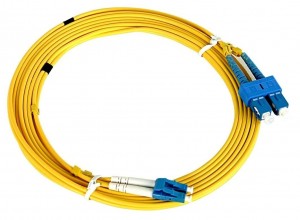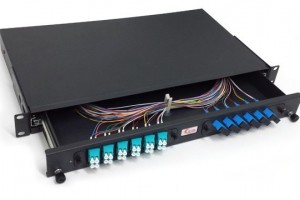Singlemode Fibre
Singlemode fibre is characterized by its small core and single mode of light causing less modal dispersion. This allows light (the signal) to travel great distances, with relatively low losses.
It requires more expensive network equipment. This has to be considered when weighing up the benefits per cost of installation and maintenance.
It is by far the most reliable option for those with high bandwidth demands over a long period of time
Benefits
- Lower signal losses
- Can carry more data for longer distances
- Best way to future proof upcoming requirements

Multimode OM3 and OM4 Fibre
OM3 or OM4 fibre is the new and improved multimode fibre cable! It has improved on the existing losses and distances of OM1 while staying within the same budget for network equipment.
It has a slightly higher tolerance to faults at the connector, due to its larger core size.
Benefits
- Cheaper network equipment
- More tolerance to core misalignment
- More tolerance to dust on connectors due to larger core size

Where would you use each type?
The usual deciding factor in choosing the difference between multimode and singlemode fibre is cable length.
If multimode can do the same thing as singlemode over a short length, then singlemode prices cannot be justified.
In general, singlemode is used for long distance cabling, especially between buildings.
OM3 and OM4 fibre is usually used for distances of anything below 220m.
Consider your bandwidth requirements!
Call Elam to get some advice on what type of fibre will suit your installation. We have experience in taking all factors into consideration and creating a custom solution to meet your needs.
